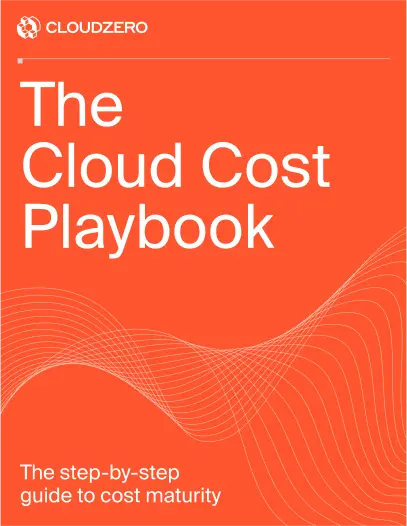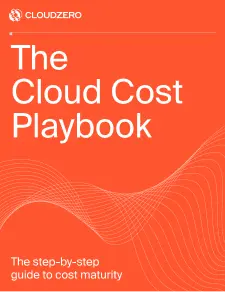As businesses increasingly migrate to cloud-based solutions to enhance their operational flexibility, the challenge of managing cloud expenses has become more pronounced. This development has highlighted the crucial role of finance teams, who are now integral in overseeing these complex cost structures.
Traditionally focused on budget control and financial forecasting, finance departments are now expected to collaborate closely with IT teams to ensure cloud expenditures are optimized and aligned with business objectives.
The importance of this collaboration cannot be overstated, as it combines IT professionals’ technical insights with financial experts’ strategic oversight to foster a more holistic approach to cloud cost management.
This article explores the evolving role of finance teams in this domain, emphasizing best practices, tools, and strategies that enhance their involvement and effectiveness in controlling cloud costs.
Understanding Cloud Costs
Understanding the nuances of cloud costs is fundamental for any business aiming to leverage cloud computing effectively. Cloud costs primarily consist of variable expenses that fluctuate based on usage, such as the resources consumed by applications and data storage needs.
This pay-as-you-go model, while offering flexibility and scalability, can lead to unpredictable billing if not managed correctly.
One of the key challenges in cloud cost management is the opaque pricing structure.
The costs can vary dramatically depending on the services used, the configuration of resources, and the pricing models of different cloud providers. Additionally, incidental costs such as data transfer fees and expenses related to compliance and security measures can further complicate the financial landscape.
To manage these costs effectively, businesses need a thorough understanding of cloud pricing models.
This includes recognizing the cost implications of different deployment options — like Reserved Instances versus On-Demand Instances — which can offer savings if used strategically. Furthermore, understanding the cost impact of scalability, such as how costs change when scaling incidents occur, is crucial.
This complex cost structure requires finance teams to develop a robust framework for monitoring and analyzing cloud expenditures.
This framework ensures that cloud investments are aligned with the overall business objectives and that spending remains within the planned budget. By mastering these elements, finance departments can play a pivotal role in steering cloud strategies that are both cost-effective and conducive to business growth.
The Role Of Finance Teams
As mentioned earlier, the role of finance teams continues to become increasingly critical as businesses invest more heavily in cloud technologies.
Finance professionals are uniquely positioned to bridge the gap between technical operations and strategic financial planning. Their expertise in budgeting and financial analysis is essential for translating complex cloud usage data into actionable insights.
Finance teams spearhead the development of comprehensive budget plans that align cloud spending with business objectives. They are responsible for forecasting future cloud expenditures based on current usage trends and business growth projections. This foresight helps prevent budget overruns and ensures that cloud investments contribute positively to the company’s overall financial health.
Beyond that, finance departments play a crucial role in cost optimization. They analyze spending patterns to identify inefficiencies and propose changes that can lead to significant cost savings. By working closely with IT departments, finance teams ensure that investments in cloud technologies are justified, optimizing resource allocation and improving overall cost efficiency.
Best Practices For Finance Teams In Cloud Cost Management
To effectively manage cloud costs, finance teams must adopt a series of strategic practices that streamline their financial oversight and enhance collaboration with IT teams. These best practices are crucial for maintaining control over cloud expenses and ensuring that investments align with the company’s financial goals.
These practices are:
- Budget Planning and Forecasting: Develop comprehensive budgets that reflect realistic cloud usage expectations and include provisions for scaling operations. Regular forecasting updates can help anticipate changes and manage costs proactively.
- Cost Monitoring and Optimization: Implement monitoring tools to track cloud spending in real-time. This allows for immediate identification of cost overruns and swift corrective actions.
- Allocating Costs: Employ precise cost allocation methods to distribute cloud expenses fairly across different departments or projects. This ensures transparency and accountability in spending.
Finance teams should focus on building a robust cost-management framework that includes these practices. By taking a proactive role in budget planning, they can set clear expectations and limits on cloud spending.
Regular cost monitoring enables them to spot trends and anomalies early, facilitating timely interventions. Additionally, accurate cost allocation is essential for internal chargebacks and for illustrating the true cost of cloud services to various stakeholders.
Through these best practices, finance teams can control costs and contribute to the organization’s strategic use of cloud resources.
Tools And Strategies For Enhancing Collaboration
Adopting specific tools and strategies is essential to foster enhanced collaboration between finance and IT teams.
Here’s a list of some of the best tools and strategies:
- Centralized Cloud Management Platforms: Facilitates a unified view of cloud usage and costs, enhancing transparency and cooperation.
- Communication Tools: Utilize platforms like Slack or Microsoft Teams to maintain continuous communication and address issues promptly.
- Shared Dashboards and Reporting Systems: Implement these tools to ensure that finance and IT have consistent access to real-time data, aligning departmental objectives and strategies.
These tools and strategies streamline interactions and support effective decision-making, ensuring that cloud cost management efforts are cohesive and well-coordinated between departments.
How CloudZero Can Help Take Your Teams To The Next Level
While many of the tools and strategies will provide a useful bump in the right direction, few platforms incorporate as many features as CloudZero.
By providing real-time insights into cloud spending, CloudZero enables finance teams to monitor and predict cloud costs effectively. Its intuitive platform integrates seamlessly with existing IT and finance workflows, ensuring that financial oversight becomes an integral part of the cloud management process.
CloudZero’s unique approach includes detailed cost allocation that helps finance teams understand exactly where and how cloud budgets are being spent. This granularity allows for more accurate forecasting and budgeting, aligning cloud expenditures with company financial goals.
Along with that, CloudZero offers tailored recommendations for cost optimization, which are based on comprehensive analysis and machine learning algorithms. These insights help finance departments make informed decisions that drive cost efficiencies and strategic investment in cloud resources.
For finance teams looking to enhance their cloud cost management strategies, CloudZero provides a clear and effective solution. The platform simplifies complex data and also fosters a collaborative environment where finance and IT can work together towards a common goal.
To truly understand how CloudZero can revolutionize your cloud cost management,  . This step could be the key to unlocking more strategic and efficient cloud spending within your organization.
. This step could be the key to unlocking more strategic and efficient cloud spending within your organization.








